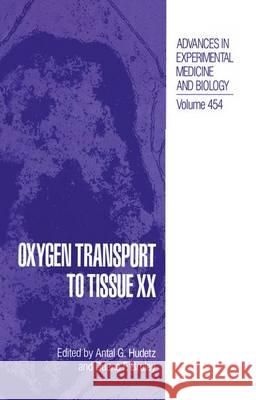Oxygen Transport to Tissue XX » książka
topmenu
Oxygen Transport to Tissue XX
ISBN-13: 9781461372066 / Angielski / Miękka / 2012 / 706 str.
''In addition to a wide variety of traditional oxygen transport topics, particular areas have been selected for emphasis at the 1997 meeting, which are:
- Molecular and genetic techniques to study oxygen transport in health and disease
- Angiogenesis during hypoxia, ischemia, and development
- Physiological mechanisms of oxygen sensing
- Physiological fluctuations of cerebral blood flow, metabolism and oxygenation
- Near infrared and phsophorescence techniques for the assessment of blood and tissue oxygenation
- Advances in biotechnology of anticoagulants and blood substitutes.











